Lloyd and McCullough Lab
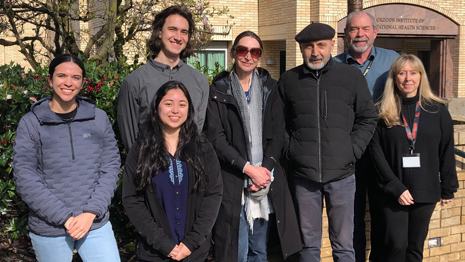
Zuckerman, Irina Minko, Vlad Vartanian, R. Stephen Lloyd, Amanda McCullough,
(April 2022)
Research interests
The goal of our combined laboratories is to translate fundamental basic science discoveries focused on cellular DNA damage response pathways into actionable clinical interventions and improved therapeutic response. We specifically are interested in mechanisms of DNA repair and replication that modulate mutagenesis and subsequent carcinogenesis in response to a variety of both natural and man-made toxicant exposures. In addition, we investigate how alterations in DNA repair and tolerance networks affect the initiation and progression of human carcinogenesis and how these fundamental principles and acquired genetic instabilities can be used to leverage tumor-specific therapeutics.
Dr. Amanda McCullough

Dr. McCullough earned her PhD in Cellular and Molecular Biology from the University of Vermont. She completed postdoctoral training in the Division of Hematology & Medical Oncology at Oregon Health & Science University and in the Department of Human Biological Chemistry & Genetics at the University of Texas Medical Branch. She is currently a Professor in the Department of Molecular & Medical Genetics and the Oregon Institute of Occupational Health Sciences. Dr. McCullough serves as the co-Director of the Molecular & Medical Genetics Graduate Program.
Dr. R. Stephen Lloyd

R. Stephen Lloyd earned his PhD in molecular biology at the University of Texas, MD Anderson Hospital and Tumor Institute in Houston and carried out postdoctoral training at Stanford University. Following employment with a genetic engineering company, he has been a faculty member at three US medical schools, including Vanderbilt University, University of Texas Medical Branch (UTMB) at Galveston, and Oregon Health & Science University (OHSU). During his career in academia, he has served as the Principal Investigator of a National Institute of Environmental Health Sciences (NIEHS) Center (UTMB), the Director of the Center in Environmental Health & Medicine (UTMB), and the Director of the Center for Research in Occupational and Environmental Toxicology (OHSU). Dr. Lloyd has authored 219 peer-reviewed publications and 27 review articles. His laboratory has been recognized by an American Cancer Society Faculty Research Award, a Faculty Research Award from the Graduate School of Biomedical Sciences, UTMB, and an Outstanding Achievement Award in Research at OHSU.
Lab members
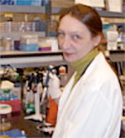
Irina attended the Moscow State University and the Institute of Biochemistry of Russian Academy of Sciences. In 1999, she joined the Lloyd lab at the University of Texas Medical Branch in Galveston, Texas and continued her research when the lab transitioned to OHSU. Irina's work has been developed in the following directions: (i) The biochemical and cellular processing of DNA-protein cross-links; (ii) The role of specialized DNA polymerases in the bypass of DNA lesions; and (iii) The mutagenic consequences of cellular processing of damaged DNA. Currently, the main focus of Irina's research is on repair of DNA-DNA cross-links.
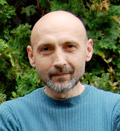
Vladimir received a PhD degree in Linguistics from the Institute of Linguistics at the Russian Academy of Sciences in Moscow. His interests focused on the psychological and social aspects of language. He became interested in biological research and joined the lab in 2003. He currently studies the role of oxidative stress and was first to observe the metabolic syndrome in NEIL1 deficient mice. In his free time, Vladimir enjoys creating art with an emphasis on drawing and painting. Selections of his work are available for purchase through Forever Art.

Sami graduated from Linfield College in 2019, earning her Bachelor of Science in Biology. She hopes to gain valuable laboratory experience through working at OHSU. She plans to transition that experience to later attend graduate school with a focus on genetics and molecular biology or genetic counseling. During Sami’s time at Linfield she played women’s soccer for 4 years, and also was able to study abroad in New Zealand and Australia. In her free time Sami enjoys traveling, reading books, and listening to podcasts.
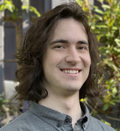
Michael Luzadder, BA - Research Assistant 2
Michael received a Bachelor of Art in biology and studio art from Lewis and Clark College in 2021. At Lewis and Clark, Michael studied abroad in Tanzania and exhibited his art in the Hoffman Gallery of Contemporary Art. In the Lloyd and McCullough lab, he plans to gain laboratory experience and explore his interests in cellular biology and biochemistry before applying to graduate school. He is passionate about biologically inspired design and science communication. Outside of the lab, Michael enjoys painting, playing piano and skiing.
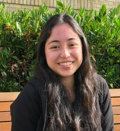
Jamie graduated from George Fox University in 2021 with a Bachelors of Science in Biochemistry, where she was a part of the swim team for all four years. She joined the Lloyd and McCullough lab to gain experience with biochemistry and cellular biology in a laboratory setting. Because of her love for learning, she hopes to attend graduate school to earn her PhD in biochemistry or structural biology. In her free time Jamie loves to paint and draw, hang out with her friends, and cheer for her favorite sports team: the Seattle Mariners.
Projects
The research within our laboratories is concentrated in three major areas that have as a central theme, the biochemical mechanisms of DNA repair and replication in response to environmental toxicant exposures. These systems are directly germane to human cancers, metabolic syndrome, and aging. First, we are interested in understanding the cellular pathways for the tolerance, mutagenesis, and repair of alkylated, ring-fragmented purines (Fapy-dG adducts), DNA interstrand crosslinks, and DNA-protein crosslinks. These DNA adducts are formed as a consequence of environmental exposure to reactive aldehydes and as a result of endogenous metabolism. Second, we are investigating the biochemical mechanisms and therapeutic applications of ultraviolet (UV) light-induced DNA damage-specific glycosylases for the prevention of skin cancer and UV-induced immunosuppression. Third, we are using biochemical, cellular and animal models to investigate repair of oxidatively-induced DNA damage that is initiated by either NEIL1 or OGG1 DNA glycosylases. Defects in these pathways contribute to lung and liver cancers and the absence of these enzymes can lead to the development of many of the symptoms of metabolic disease.
The combination of chronic dietary exposure to the fungal toxin, aflatoxin B1 (AFB1), and hepatitis B viral (HBV) infection is associated with a significant increased risk for early onset hepatocellular carcinomas (HCCs) in millions of people living in East Asia, Central and South America, and sub-Saharan Africa. Even though dietary exposures to aflatoxins constitute the second largest global environmental risk factor for cancer development, there are still significant questions concerning the molecular mechanisms driving carcinogenesis. In-depth knowledge of these mechanisms is critical for the identification of genetic risk factors that affect individual susceptibility for people who are HBV infected and AFB1 exposed. In this regard, since AFB1 carcinogenesis is driven by high frequency G to T transversions, the DNA repair pathways that initiate and complete repair of persistent AFB1-induced DNA adducts and base damage from HBV-induced inflammation have strong biological significance. These pathways define the mutagenic burden in the target tissues and ultimately limit cellular progression to cancer. To address these issues, we have demonstrated that knockout of the DNA base excision repair pathway, initiated by the DNA glycosylase NEIL1, is extremely important in the removal of the highly mutagenic AFB1-Fapy-dG adducts. Thus, our data suggest that deficiencies in NEIL1 could contribute to the initiation of HCCs in humans. To maximize relevance to human health, all known variants of NEIL1 are being characterized from regions of the world where aflatoxin ingestion and HBV infection are prevalent. Overall, these studies have direct human health relevance pertaining to understanding a global environmental health problem by identifying genetic risk factors and biochemical pathways previously not recognized as germane to AFB1-induced carcinogenesis.
- McCullough, AK and Lloyd, RS. Mechanisms underlying aflatoxin-associated mutagenesis - Implications in carcinogenesis. DNA Repair (Amst). 2019 Mar: 77: 76-86, PMC6959417.
- Minko IG, Christov PP, Li L, Stone MP, McCullough AK, Lloyd RS. Processing of N5-substituted formamidopyrimidine DNA adducts by DNA glycosylases NEIL1 and NEIL3. DNA Repair (Amst). 2019 Jan;73:49-54
- Coskun, CE, Jaruga, P, Vartanian, V, Erdem, O, Egner, PA, Groopman, JD, Lloyd, RS, Dizdaroglu, M. Aflatoxin-guanine DNA Adducts and Oxidatively-induced DNA Damage in Aflatoxin-treated Mice in vivo as Measured by Liquid Chromatography-Tandem Mass Spectrometry with Isotope-dilution. Chem. Res. in Toxicol. 2018 Dec. 11, PMID: 30525498, PMCID: PMC7027973 DOI: 10.1021/acs.chemrestox.8b0020
- Vartanian V, Minko IG, Chawanthayatham S, Egner PA, Lin YC, Earley LF, Makar R, Eng JR, Camp MT, Li L, Stone MP, Lasarev MR, Groopman JD, Croy RG, Essigmann JM, McCullough AK, Lloyd RS. NEIL1 protects against aflatoxin-induced hepatocellular carcinoma in mice. Proc Natl Acad Sci U S A. 2017 Apr 18;114(16):4207-4212. PMCID: PMC5402411
- Lin YC, Owen N, Minko IG, Lange SS, Li L, Stone MP, Wood RD,McCullough AK, Lloyd RS. DNA polymerase limits chromosomal damage and promotes cell survival following aflatoxin exposure. Proc Natl Acad Sci, U S A. 2016 Nov 29;113(48):13774-13779. PMCID: PMC5137696
In collaboration with faculty at Vanderbilt University and the University of Minnesota, we are part of a Program Project grant to understand both the fundamental mechanisms underlying the cytotoxic properties of chemotherapeutic drugs that initially damage DNA through alkylation at N7-dG and how these agents, when used in combination with other chemotherapeutic agents, produce here-to-fore uncharacterized complex DNA lesions. The goal is to leverage these discoveries into new therapeutic trial designs that optimize selective toxicities. Our project seeks to understand the biological pathways and consequences of processing these complex DNA damages arising from secondary decomposition products of alkyl-modified N7-dG adducts. These include abasic (AP) sites which can serve as the structural scaffold from which more complex and highly cytotoxic DNA damage can be formed through covalent conjugation with anthracycline-based chemotherapeutic agents such as doxorubicin.
- Sha Y, Minko IG, Malik CK, Rizzo CJ, Lloyd RS. Error prone replication bypass of the imidazole ring-opened formamidopyrimidine deoxyguanosine adduct. Environ Mol Mutagen 2017; PMCID: PMC5476229 Editors Choice Award
- Vartanian V, Minko IG, Chawanthayatham S, Egner PA, Lin YC, Earley LF, Makar R, Eng JR, Camp MT, Li L, Stone MP, Lasarev MR, Groopman JD, Croy RG, Essigmann JM, McCullough AK, Lloyd RS. NEIL1 protects against aflatoxin-induced hepatocellular carcinoma in mice. Proc Natl Acad Sci, USA 2017 PMCID: PMC5402411
- Minko IG, Jacobs AC, de Leon AR, Gruppi F, Donley N, Harris TM, Rizzo CJ, McCullough AK, Lloyd RS. Catalysts of DNA Strand Cleavage at Apurinic/Apyrimidinic Sites. Nature Sci Reports 2016; PMCID: PMC4929455
- Minko IG, Earley LF, Larlee KE, Lin YC, Lloyd RS. Pyrosequencing: applicability for studying DNA damage-induced mutagenesis. Environ Mol Mutagen 2014 PMID: 24962778 PMCID: PMC4197070
In addition, our laboratories have investigated the cellular pathways for the repair of DNA-protein crosslinks that form as a consequence of reactive aldehyde exposure. Exposure to DPC-inducing adducts has been linked with nasopharyngeal cancers and leukemia. We used a comprehensive array of over 300 genes representing all major human DNA damage response pathways to assess cell proliferation following siRNA knockdown and subsequent formaldehyde treatment. Although there were gene-specific differences among the different cell lines, four cellular pathways were determined to mitigate formaldehyde toxicity: homologous recombination, double-strand break repair, ionizing radiation response, and DNA replication. The contributions of the different genetic contexts of the cell lines were examined using exome sequencing and Cancer Cell Line Encyclopedia genomic data. These results provide a foundation for detailed mechanistic analyses of pathway involvement and susceptibilities to environmentally-induced DNA-protein crosslinks.
- Juarez, E, Chambwe, N, Tang, W, Mitchell, AD, Owen, N, Kumari, A., Monnat, RJ, McCullough, AK. An RNAi screen in human cell lines reveals conserved DNA damage repair pathways that mitigate formaldehyde sensitivity. DNA Repair 2018 Dec; 72:1-9.
The prevalence of human obesity continues to rise, with one-third of all U.S. adults classified as obese, and another one-third overweight. Ramifications of this growing trend are highly correlated with comorbidities in a variety of other major secondary medical conditions including elevated heart disease, stroke, type 2 diabetes, fatty liver disease, chronic inflammation, and certain types of cancer. These medical conditions have enormous financial impacts on healthcare and insurance costs that are associated with the treatment and ongoing care for these individuals. Although this epidemic must be first addressed through education concerning the benefits of exercise, balanced diet, and adequate sleep, there are numerous circumstances in which weight gain is highly anticipated as a result of disease progression or pharmacologic treatment. Treatment of such patient populations represents large financial markets in which prevention of weight gain is a win-win-win situation for the patient, healthcare provider and insurance providers. To meet these challenges, our research has identified a mechanism through which diet- or genetic-induced weight gain can be largely prevented by increasing the DNA repair capacity in mitochondria. We propose to translate our findings into pharmacologically tractable approaches. Our goals are to optimize the structure of drug-like molecules that have been selected for enhanced catalytic activity and increased repair activity in mitochondrial DNA.
- Komakula SSB, Tumova J, Kumaraswamy D, Burchat N, Vartanian V, Ye H, Dobrzyn A, Lloyd RS, Sampath H. The DNA Repair Protein OGG1 Protects Against Obesity by Altering Mitochondrial Energetics in White Adipose Tissue. Sci Rep. 2018 Oct 5;8(1):14886
- Vartanian, V, Tumova, J, Dobrzyn, P, Dobrzyn, A, Nakabeppu, Y, Lloyd RS, Sampath, H. 8-oxoguanine DNA glycosylase (OGG1) deficiency elicits coordinated changes in lipid and mitochondrial metabolism in muscle. PLoS ONE 12(7):e0181687 2017 PMCID: PMC5519207
- Sampath H, Vartanian V, Rollins MR, Sakumi K, Nakabeppu Y, Lloyd RS. 8-Oxoguanine DNA Glycosylase (OGG1) Deficiency Increases Susceptibility to Obesity and Metabolic Dysfunction. PLoS One. 7(12):e51697, 2012. PMID: 23284747 PMCID: 3524114
- Sampath H, Batra AK, Varatanian V, Carmical JR, Prusak D, King IB, Lowell B, Earley LF, Wood TG, Marks DL, McCullough AK, Lloyd RS. Variable penetrance of metabolic phenotypes and development of high fat diet-induced adiposity in NEIL 1-deficient mice. Am J Physiol Endocrinol Metab 300(4): E724-734, 2011. PMID: 21285402, PMCID: 3074946.
- Vartanian V, Lowell B, Minko IG, Wood TG, Ceci JD, George S, Ballinger SW, Corless CL, McCullough, AK, Lloyd RS. The metabolic syndrome resulting from a knockout of the NEIL1 DNA glycosylase. Proc Natl Acad Sci U S A. 103(6):1864-9, 2006. PMID: 16446448
Our laboratories also focus on mechanisms of DNA repair of oxidatively-induced DNA damage in which we are using biochemical, cellular and animal models to investigate repair that is initiated by either OGG1 or NEIL1 DNA glycosylases. These enzymes are potentially excellent new targets for therapeutic intervention. To augment these studies and to develop novel drug therapeutic strategies, we have developed fluorescence-based high throughput methodologies to screen for either inhibitors or agonists of DNA glycosylases. These small molecule inhibitors and agonists will have the capacity to be used therapeutically in conjunction with standard chemotherapeutic regimens.
- Minko IG, Jacobs AC, de Leon AR, Gruppi F, Donley N, Harris TM, Rizzo CJ, McCullough AK, Lloyd RS. Catalysts of DNA Strand Cleavage at Apurinic/Apyrimidinic Sites. Nature Sci Reports 2016; PMCID: PMC4929455
- Donley N, Jaruga P, Coskun E, Dizdaroglu M, McCullough AK, Lloyd RS. Small Molecule Inhibitors of 8-Oxoguanine DNA Glycosylase-1 (OGG1) ACS Chemical Biology 2015 Oct 16;10(10):2334-43 PMCID: PMC4894821.
- Jacobs AC, Calkins MJ, Jadhav A, Dorjsuren D, Maloney D, Simeonov A, Jaruga P, Dizdaroglu M, McCullough AK, Lloyd RS. Inhibition of DNA glycosylases via small molecule purine analogs. PLoS One. 2013;8(12): e81667. PMCID: PMC3857224.
- Yamanaka K, Dorjsuren D, Eoff RL, Egli M, Maloney DJ, Jadhav A, Simeonov A, Lloyd RS. A comprehensive strategy to discover inhibitors of the translesion synthesis DNA polymerase . PLoS One. 2012;7(10): e45032. PMCID: PMC3466269.
Sunlight exposure causes DNA damage in skin cells, leading to more than five million cases of non-melanoma skin cancer diagnosed in the United States annually. Human cells possess only one mechanism (Nucleotide Excision Repair, NER) for repair of ultraviolet light (UV)-induced DNA damage. This mechanism is defective in individuals affected with Xeroderma Pigmentosum (XP) causing them to be ~1000-fold more cancer-prone than the general population. Human cells do have enzymes to complete other mechanisms of DNA damage repair, Base Excision Repair (BER) and Nucleotide Incision Repair (NIR), but lack both a pyrimidine dimer specific glycosylase (Pdg) needed to initiate BER and a UV endonuclease (UVDE) to initiate NIR in response to UV. We have cloned, expressed, and encapsulated both a pdg and a UVDE into a liposome formulation that can be applied topically for a transdermal delivery to achieve activation of one of the additional DNA repair pathways. In a murine model, the addition of the NIR pathway resulted in decreased tumor burden and increased survival. Extrapolation of these data to humans would suggest the exogenous delivery of repair proteins to human skin has the potential to enhance DNA repair following UV exposure. In order to address this clinically-relevant problem, we have shown that when human skin is grown in the laboratory, repair of sunlight damage rapidly occurs when the DNA repair lotion is applied. The studies have been extended to preclinical pharmacology and toxicology studies using a mini-pig model and safety has been demonstrated in a thousand-fold dose escalation trial. Further, these enzymes have been demonstrated to be effective in rapidly removing cyclobutane pyrimidine dimers from the skin of mini-pigs. These studies are leading directly to FDA safety approval and initial human clinical trials.
- Sha Y, Vartanian V, Owen N, Mengden Koon SJ, Calkins MJ, Thompson CS, Mirafzali Z, Mir S, Goldsmith LE, He H, Luo C, Brown SM, Doetsch PW, Kaempf A, Lim JY, McCullough AK, Lloyd RS. Modulation of UVB-induced Carcinogenesis by Activation of Alternative DNA Repair Pathways. Sci Rep. 2018 Jan 15;8(1):705. PMID: 29335541. PMCID: PMC5768739.
- Calkins MJ, Vartanian V, Owen N, Kirkali G, Jaruga P, Dizdaroglu M, McCullough AK, Lloyd RS. Enhanced sensitivity of Neil1-/- mice to chronic UVB exposure. DNA Repair (Amst). 2016 Dec;48:43-50. PMID: 27818081 PMCID: PMC5499380
- Johnson JL, Lowell BC, Ryabinina OP, Lloyd RS, McCullough AK. TAT-Mediated Delivery of a DNA Repair Enzyme to Skin Cells Rapidly Initiates Repair of UV-Induced DNA Damage. J Invest Dermatol. 131, 753-761 2010. PMCID: 3203208.